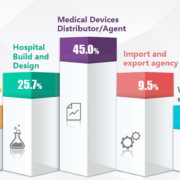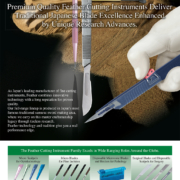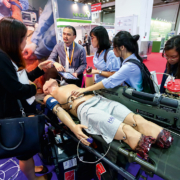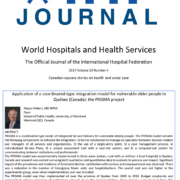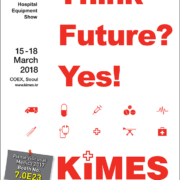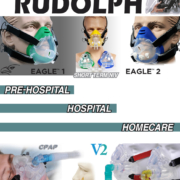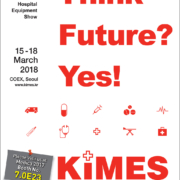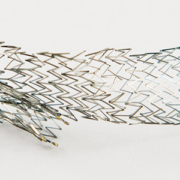Non invasive techniques for detecting vulnerable plaques
Rupture of the coronary plaque surface, accompanied by the exposure of thrombogenic, red cell-rich necrotic core material, is one of the most important underlying mechanisms in acute coronary syndrome (ACS). After decades of idling, such plaques sometimes suddenly burst into this life-threatening condition. The rupturing occurs during the evolution of coronary atherosclerotic lesions, and is often accompanied by super-imposed thrombosis.
To date, the precise mechanisms involved in plaque erosion remain generally unknown. Coronary spasm is simply a universal suspect.
Prevention is therefore considered to be the only effective means for reducing the mortality and morbidity of coronary heart disease.
Coronary lesions that are prone to rupture have a distinct morphology compared with stable plaques, and provide a unique opportunity for non-invasive imaging to identify vulnerable plaques, before they lead to clinical events.
Plethora of terminology
The severity and prognosis of plaque rupture is characterized by a plethora of terminology. Plaque vulnerability describes the risk of symptomatic thrombosis in the short term, whereas plaque ‘activity’ remains ambiguous (referring to one of a wide variety of processes associated with progression).
‘Plaque burden’ is accepted to denote extent of disease. It is a measure of the extent of atherosclerosis, regardless of the cellular composition or activity of plaques. There are various ways to measure the burden: plaque volume, lesion-coverage of arterial surface – sometimes based on using computed tomography (CT) to measure coronary calcium score, or ultrasound to assess plaque area in the carotid bed. Given that atherosclerosis is multi-focal (and impacts upon the entire vasculature), a high plaque burden in one region (e.g. the lower limbs) may be a marker for advanced disease elsewhere. The highest concern on the latter consists of the coronary arteries due to their high degree of susceptibility.
Size is not everything
Rather than plaque size alone, the risk of rupture depends more on the composition and type of plaque, inter alia, richness in soft extracellular lipids – and macrophages. Indeed, structurally what is required for plaque rupture is an extremely thin fibrous cap. As a result, ruptures are usually minuscule and occur mainly at the periphery of the cap covering the lipid-rich core – among lesions clinically defined as thin-cap fibroatheromas. They have reduced tensile strength and are more extensible than intact caps, while the presence of collagen and smooth muscle cells is lower. In effect, as extracellular lipid accumulation progresses (usually due to external stress/triggers), the fibrous cap weakens and predisposition of a plaque to rupture increases.
Several other factors are also believed to play a concurrent role, among them inflammatory cell recruitment, macrophage formation, necrosis, matrix synthesis, calcification, arterial remodelling, etc.
The interaction between these factors is not only complex but variable too, as far as the development of plaque is concerned. This leads to unpredictable rates of progression and variable clinical outcomes.
Not all ruptures lead to ACS
Nevertheless, there are, once again, certain other issues in play with regard to the clinical relevance of vulnerable plaque detection. Most plaques remain subclinical and asymptomatic. Others elicit acute thrombosis and may lead to an acute coronary syndrome (ACS).
However, not all plaque ruptures cause ACS. Some develop obstructively (stable angina). Indeed, on its own, stable angina pectoris derived from atherosclerosis is rarely fatal without scarring of the myocardium – the latter can provoke an arrhythmia presenting as sudden cardiac death.
Confusion arises in other contexts too. For example, the presence of thrombosis is not the same as the occurrence of ACS. Indeed, some physicians believe that the majority of ruptures and erosions are asymptomatic in the short term, although they may sometimes lead to gradual coronary narrowing.
Nightmare for prognosis
This lack of clarity has proven to be a nightmare. ACS occurs only when vulnerable plaque, platelet activation and impaired fibrinolysis occur alongside inflammatory states. Such vulnerability may change with time, and it is these changing dynamics vis-a-vis stress/triggers which determines the exact moment and point of rupture. As a result, the non-invasive detection of vulnerable plaques is considered to be of great clinical relevance, especially in ultra-high risk patients.
At the cutting-edge
Currently, a host of new, non-invasive techniques are being harnessed to assess and predict the likelihood of coronary plaque rupture. Leading the way are computational fluid dynamics (CFD) and fractional flow reserve (FFR) methodologies. They are based on harnessing supercomputing capability to the analysis of CT angiography.
The high quality imaging and sub-millimetre resolution of modern computed tomography (CT) scanners allows characterization and quantification of lesions at accuracies unimaginable barely a decade ago. CFD supplements the functional information of CT-based plaque assessment by calculating lesion-specific endothelial shear stress and FFR. Such supplementation of functional information by quantified morphologic data about coronary plaques is considered to be one of the best means to detect vulnerable plaques.
FFR guided therapy
For patients with coronary calcification and hemodynamically significant obstructive disease, FFR has long been considered the best solution for guiding re-vascularization of lesions and improving outcomes. FFR provides an index of atherosclerosis and lesion significance, as measured with a pressure-sensitive angioplasty guidewire. FFR-guided therapy has improved patient outcomes, reduced stent insertions. However, it is used in less than one-tenth of cases due to procedural and operator related factors – above all, patient discomfort due to time and motion artifact as well as cost.
Coupling FFR to CT angiography
More recently, due to the developments in non-invasive CT imaging and the application of CFD modelling to CT angiography datasets, FFR can be derived non-invasively without requiring modification of standard CT angiography acquisition protocols or inducing hyperemia.
Such non-invasive FFR, moreover, has been shown to demonstrate excellent correlation with invasive FFR.
PLATFORM Study
One of the key studies investigating the impact of combining FFR and CT was called PLATFORM (the Prospective LongitudinAl trial of FFRCT: Outcome and Resource Impacts).
PLATFORM, which ran from the end of 2013 to 2015 at centres in the US and Europe, demonstrated improved patient selection for invasive angiography using a combination of coronary CT angiography (CCTA) along with fractional flow reserve CT (FFRCT). The so-called CCTA-FFRCT approach increased the chance of identifying obstructive coronary artery disease among those intended for invasive testing and held forth the promise of serving as an efficacious gatekeeper to invasive coronary angiography (ICA).
The findings were conclusive, with numbers presented by researchers at the European Society of Cardiology at London in 2015. The use of FFRCT in patients with planned invasive catheterization, they noted, was associated with a reduction in the rate of finding no obstructive CAD at ICA, from 73% to 12%. It also resulted in cancellation of 61% of ICAs.
Computational fluid dynamics
In effect, the adoption and translation of CFD modelling may be considered to have revolutionized cardiovascular medicine.
CFD is a specialist IT discipline bringing together advanced mathematics and fluid mechanics. Its roots lie in mission-critical/high-performance engineering systems. Much of its history is intimately connected to the aerospace industry, to enhance the accuracy of complex simulation scenarios such as transonic or turbulent air flows.
In medicine, the first-ever CFD investigations began in cardiovascular research, to clarify the characteristics of aortic flow in a degree of detail below the threshold of experimental measurements. Computer-aided design (CAD) models of the human vascular system were built using modern imaging techniques, coupled to rapid, economical, low-risk 3-D prototyping. The ensuing models precisely computed factors such as blood flow and tissue behaviour and response, taking close consideration of boundary conditions such as complex systemic/physiological pressure and ‘virtualized’ metrics such as wall shear stress.
CFD modelling has already revolutionized the development of devices such as stents, valve prostheses, and ventricular assist devices.
CFD is currently being translated into cardiovascular clinical tools for minimally-invasive application to a wide spectrum of coronary, valvular, myocardial and peripheral vascular diseases. One of the biggest advantages offered by combining high-resolution imaging with CFD is that unique patient-specific data can be juxtaposed into multi-scale, variable duration models to make individualized risk prediction and planning possible. This is directly opposed to registry-based, population-averaged data.
In the future, it is expected that the trend to ‘digital patient’ representation, combined with population-scale numerical models, will reduce cost, time and risk associated with clinical trials.
The massive processing power brought to play by CFD quickly led to the understanding that mechanistic forces of arterial wall shear stress (WSS) and axial plaque force acting on coronary plaques might be responsible for both the development of coronary plaque and its vulnerability to rupture.
For example, it is difficult to measure WSS, a key factor in the development of atherosclerosis and in-stent restenosis, without invasive procedures – with all the latters’ attendant risks and frequent futility. One study demonstrated that less than a third of patients with suspected obstructive coronary artery disease (CAD) showed its presence after invasive coronary angiography (ICA), while an even-smaller number had flow-limiting obstructive disease based on invasive fractional flow reserve (FFR).
In contrast, CFD models can both compute and map the spatial distribution of WSS, establishing links between haemodynamic disturbance and atherogenesis and explaining why atherosclerotic plaque tends to be deposited at arterial bends or bifurcations.
CFD modelling has also been central to comprehending the role of WSS in endothelial homoeostasis. While turbulent blood flow reduces WSS and stimulates adverse vessel remodelling, non-disturbed laminar blood flow seems to be associated with higher WSS – which reduces endothelial cell activation. In a March 2012 issue of ‘Circulation’, researchers from Johns Hopkins University School of Medicine, CVPath Institute at Maryland and the Mount Sinai School of Medicine in New York established that a complex series of WSS-related signalling pathways and interactions underlie the above phenomenon.
Though much more remains to be understood before such pathways can be exploited to their full extent to yield new anti-atherosclerotic therapies, few doubt that the way forward lies in further CFD models that combine dynamic fluid behaviour analysis with cellular response.
Other emerging techniques
Apart from CFD, other methodologies under consideration to quantify measurement of coronary plaque and lesions include the use of radio-frequency (RF) backscatter intravascular ultrasound. A prospective study in 2011 in the US known as ATLANTA sought to make the first-ever assessment of the accuracy of 3-dimensional, quantitative measurements of coronary plaque by computed tomography angiography (CTA) against intravascular ultrasound with radiofrequency backscatter analysis (IVUS/VH).
For the ATLANTA study, 60 patients underwent coronary X-ray angiography, IVUS/VH and coronary CTA. Plaque geometry and composition was quantified after spatial co-registration on segmental and slice-by-slice bases. The researchers found significant correlation for all pre-specified parameters by segmental and slice-by-slice analyses. Compositional analysis suggested that high-density non calcified plaque on CTA best correlated with fibrous tissue and low-density non calcified plaque correlated with necrotic core plus fibrofatty tissue by IVUS/VH.


